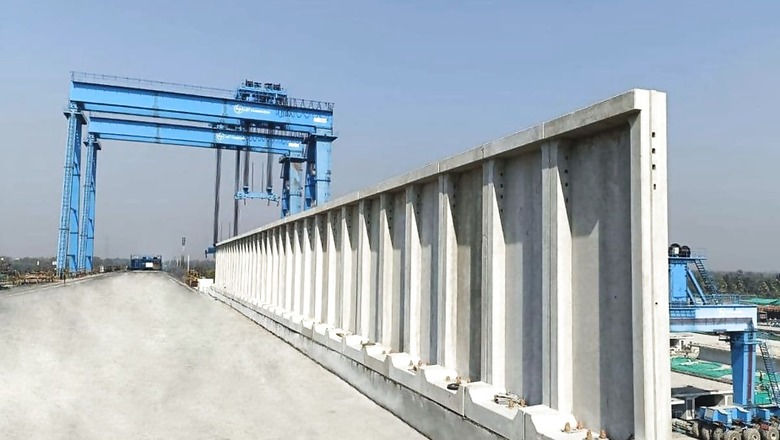
views
Noise barriers will be installed for the Mumbai-Ahmedabad High-Speed Rail, also known as the bullet train project, in a step to check noise pollution usually generated by trains. The barriers are designed in a way so as to not obstruct the view for passengers.
“These panels are being erected on either side of the viaduct to mitigate the noise, which will be generated by the train and civil structure during operations,” an official aware about the subject told News18 on condition of anonymity.
Based on the Shinkansen technology, the noise barriers are concrete panels that are 2 m tall from the rail level and 1 m wide. The official said these will reflect and distribute aerodynamic sound generated by the train and its lower part, primarily the wheels, while running on the tracks.
“Noise barriers are designed in such a way that they will not obstruct the view for the passengers enjoying the train ride,” the official said.
For residential and urban areas, these panels will be a little taller. “The viaduct passing through the residential and urban areas will have higher/taller noise barriers measuring 3 m. In addition to the 2 m concrete panel, the additional 1 m noise barrier will be made of ‘polycarbonate’ and be translucent in nature,” the official added.
For the inside of the train, the double-skin aluminium alloy body will minimise noise levels. Further, the long and sharp nose of the high-speed train will reduce the aerodynamic drag, which will also reduce the blasting sound generated due to micro pressure waves created while the train exits a tunnel.
The total length of the bullet train corridor is 508 km – 156 km in Maharashtra, 4 km in Dadra and Nagar Haveli and 384 km in Gujarat. At least 92 percent or 465 km alignment is elevated on the viaduct. Overall, 99.17 percent land has been acquired for the project, with 98.91 percent in Gujarat and 99.75 percent in Maharashtra. In Dadra and Nagar Haveli, the entire 7.90 hectares of land have been acquired.
The work on the country’s first bullet train started in September 2017 at Ahmedabad. Prime Minister Narendra Modi and former Japanese premier Shinzo Abe jointly laid the foundation stone for the project. The total cost of the project was estimated at Rs 1.08 lakh crore in 2015.
Read all the Latest India News here


















Comments
0 comment